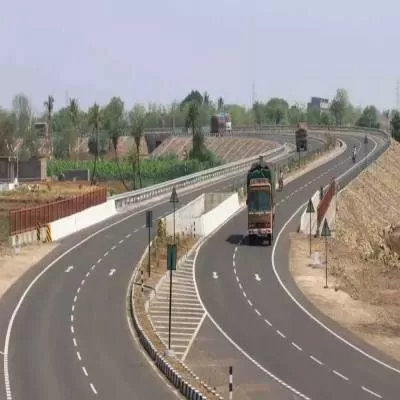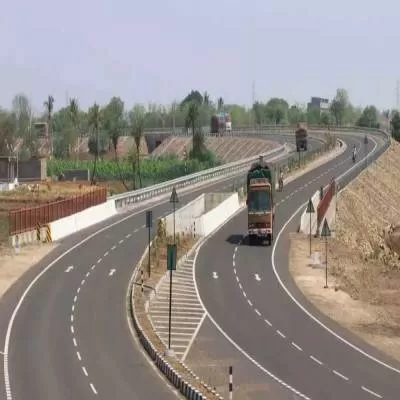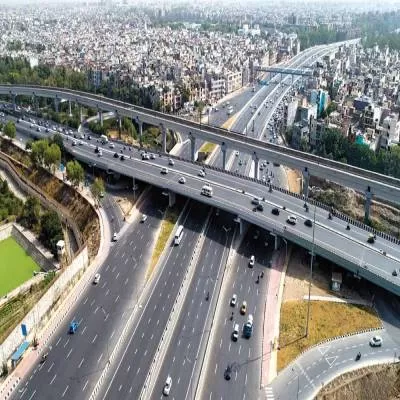- Home
- Infrastructure Transport
- ROADS & HIGHWAYS
- About 10,000 km of road projects every year for the next six years

About 10,000 km of road projects every year for the next six years
- There is a lot of action in the highway sector. The overall sales of construction equipment over the last one year has gone up significantly over the previous year, the consumption of cement and steel has gone up, and bitumen has gone up by more than about 30 per cent. Also, traffic has increased by more than 2-3 per cent over the previous year, and the 8 per cent growth in GDP commercial traffic will further increase by about 10 per cent. Not surprisingly, the toll revenues of most companies have gone up significantly over this period.
- From my vision, I can clearly say that there is a window where we will be digging out about 10,000 km of road projects every year for the next six years; of this, we should award about 6,000 to 7,000 km every year.
- Going forward, our effort is to adopt a more holistic approach. Apart from just construction, we have started focusing on highway management and commuter comfort. For management, automatic traffic management systems (ATMS) are the need of the hour.
- Decongesting cities is another big programme we intend to undertake. We have initiated work on the Delhi decongestion plan at the Eastern Peripheral Expressway. We are going to do bypasses for practically every big city of the country. We are developing a project profile worth Rs 12,000 to 14,000 crore for an outer ring road for the new Amaravati capital city. The idea is to connect the SEZs, smart cities and ports, and ensure seamless connectivity for all economic corridors.
- Almost all the 360-odd toll plazas in the country are fitted with electronic tolling systems that can accept radio frequency identification (RFID).
- There is extreme transparency today as anyone can bid from any part of the world through an electronic platform.
- We have already identified about 200 locations, where wayside amenities as integrated structures can be built.
- When it comes to projects that have been languishing and stressed for a long time, we have made efforts to support the industry to get these kick-started. From about 50-60 stressed projects two years ago, today we have just a handful, of which we have been able to negotiate for five projects with the banks despite the challenges involved.
- PPPs are extremely relevant, but sometimes projects languish. For this, there is the toll-operate-transfer (TOT) model to which the Cabinet has given its clearance. We may do a project on an EPC mode and bid it out on TOT to capture the private-sector efficiency in maintenance and operation of the project.
- It is when the owners are actively involved and are vigilant that they are able to dive over all the problems making a project successful.
To view his entire speech, log on to
www.ConstructionWorld.in/Awards/videos?
Raghav Chandra, Chairman, NHAI, delivering the keynote address for the evening. CW Annual Awards Keynote Speaker RAGHAV CHANDRA, Chairman, National Highways Authority of India, didn´t mince his words with the rapt audience. ´The first thing we are asked is, ´How many kilometres are you making today?´ As if we are tailors stitching trousers. We are building roads, and roads run over communities, cities, villages and much more.´ Here are some other excerpts from his talk: There is a lot of action in the highway sector. The overall sales of construction equipment over the last one year has gone up significantly over the previous year, the consumption of cement and steel has gone up, and bitumen has gone up by more than about 30 per cent. Also, traffic has increased by more than 2-3 per cent over the previous year, and the 8 per cent growth in GDP commercial traffic will further increase by about 10 per cent. Not surprisingly, the toll revenues of most companies have gone up significantly over this period. From my vision, I can clearly say that there is a window where we will be digging out about 10,000 km of road projects every year for the next six years; of this, we should award about 6,000 to 7,000 km every year. Going forward, our effort is to adopt a more holistic approach. Apart from just construction, we have started focusing on highway management and commuter comfort. For management, automatic traffic management systems (ATMS) are the need of the hour. Decongesting cities is another big programme we intend to undertake. We have initiated work on the Delhi decongestion plan at the Eastern Peripheral Expressway. We are going to do bypasses for practically every big city of the country. We are developing a project profile worth Rs 12,000 to 14,000 crore for an outer ring road for the new Amaravati capital city. The idea is to connect the SEZs, smart cities and ports, and ensure seamless connectivity for all economic corridors. Almost all the 360-odd toll plazas in the country are fitted with electronic tolling systems that can accept radio frequency identification (RFID). There is extreme transparency today as anyone can bid from any part of the world through an electronic platform. We have already identified about 200 locations, where wayside amenities as integrated structures can be built. When it comes to projects that have been languishing and stressed for a long time, we have made efforts to support the industry to get these kick-started. From about 50-60 stressed projects two years ago, today we have just a handful, of which we have been able to negotiate for five projects with the banks despite the challenges involved. PPPs are extremely relevant, but sometimes projects languish. For this, there is the toll-operate-transfer (TOT) model to which the Cabinet has given its clearance. We may do a project on an EPC mode and bid it out on TOT to capture the private-sector efficiency in maintenance and operation of the project. It is when the owners are actively involved and are vigilant that they are able to dive over all the problems making a project successful. To view his entire speech, log on to www.ConstructionWorld.in/Awards/videos?





















